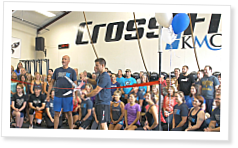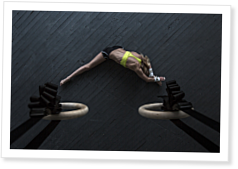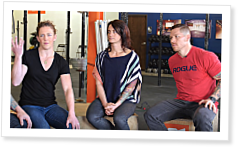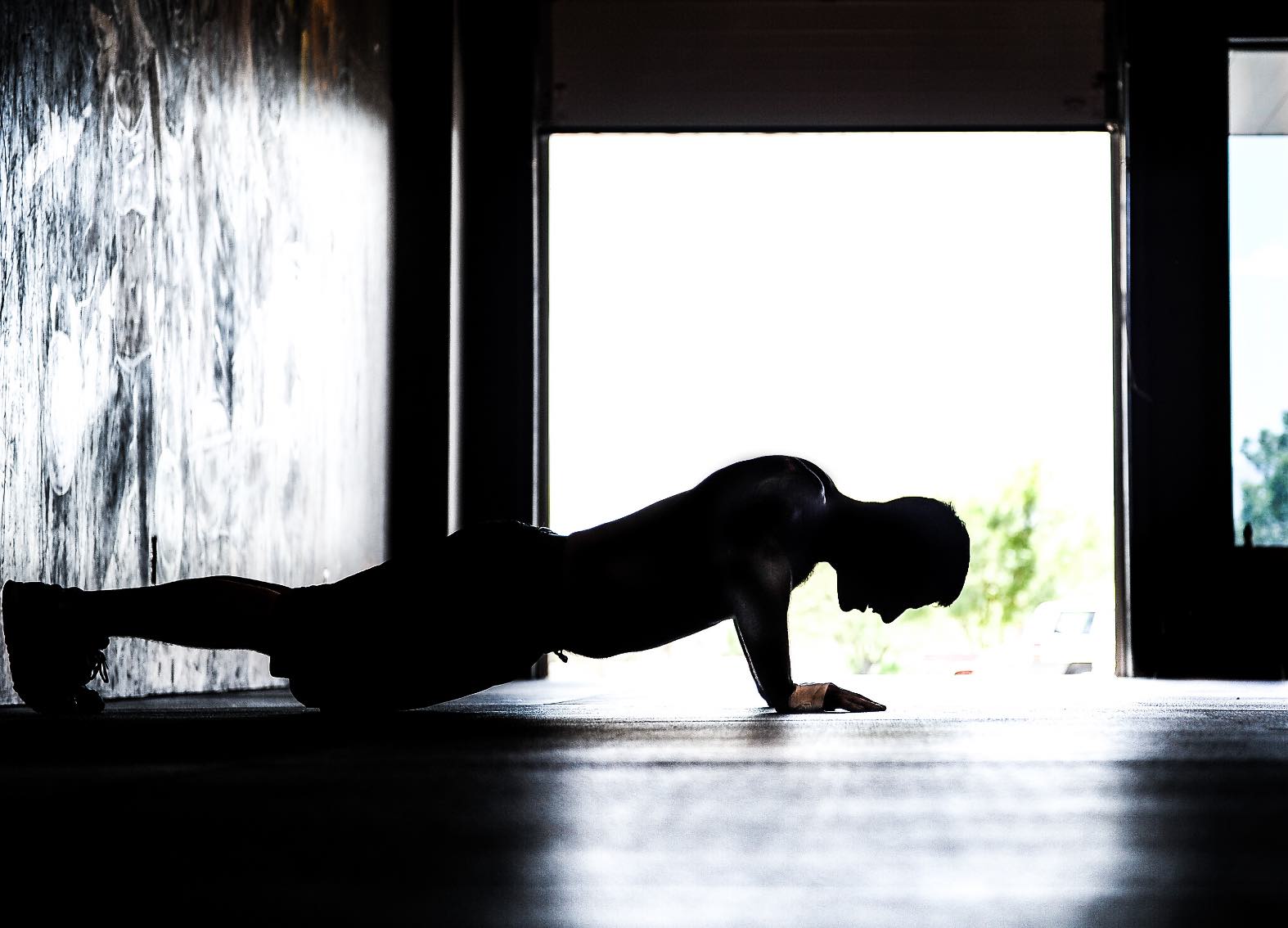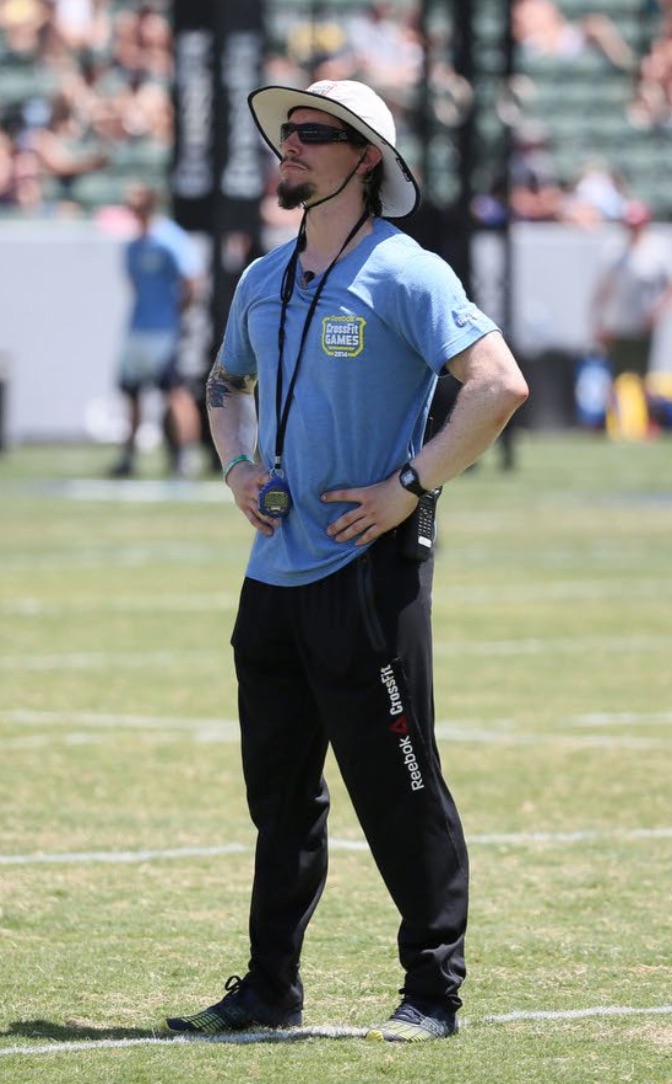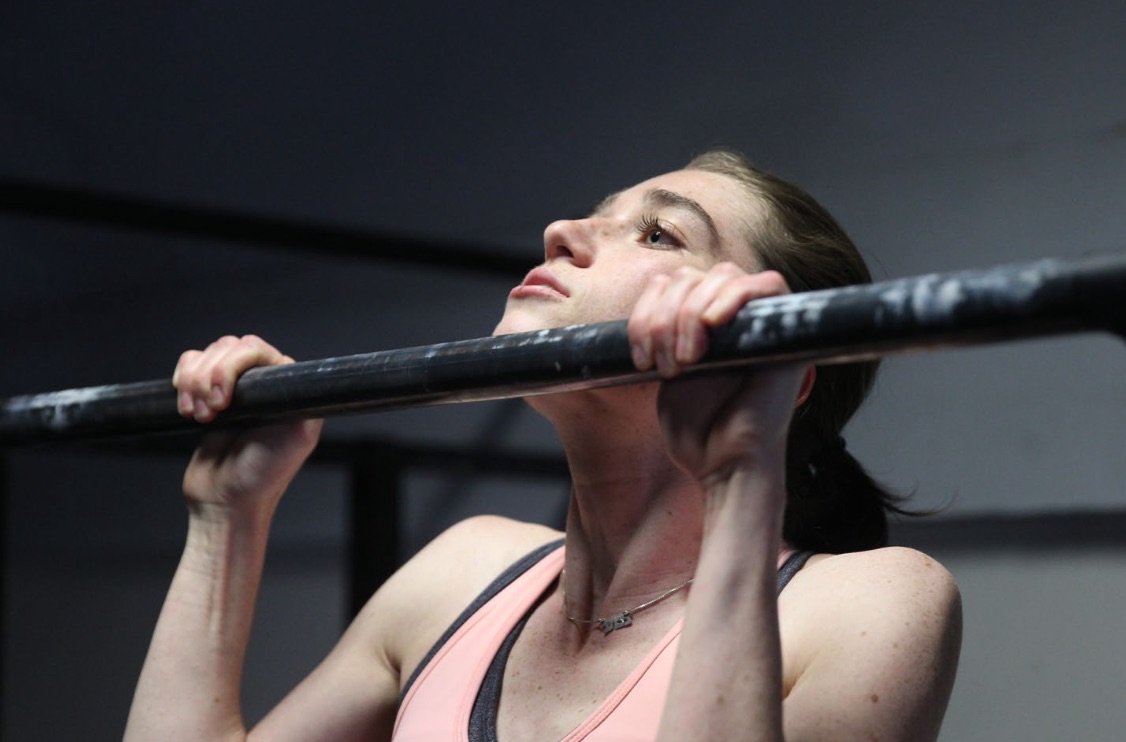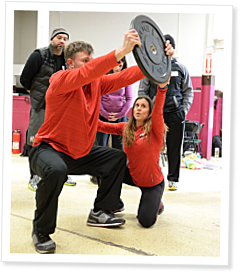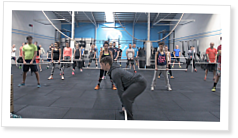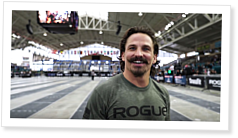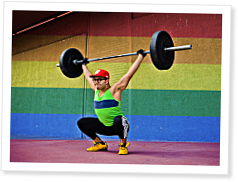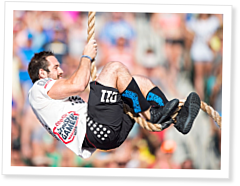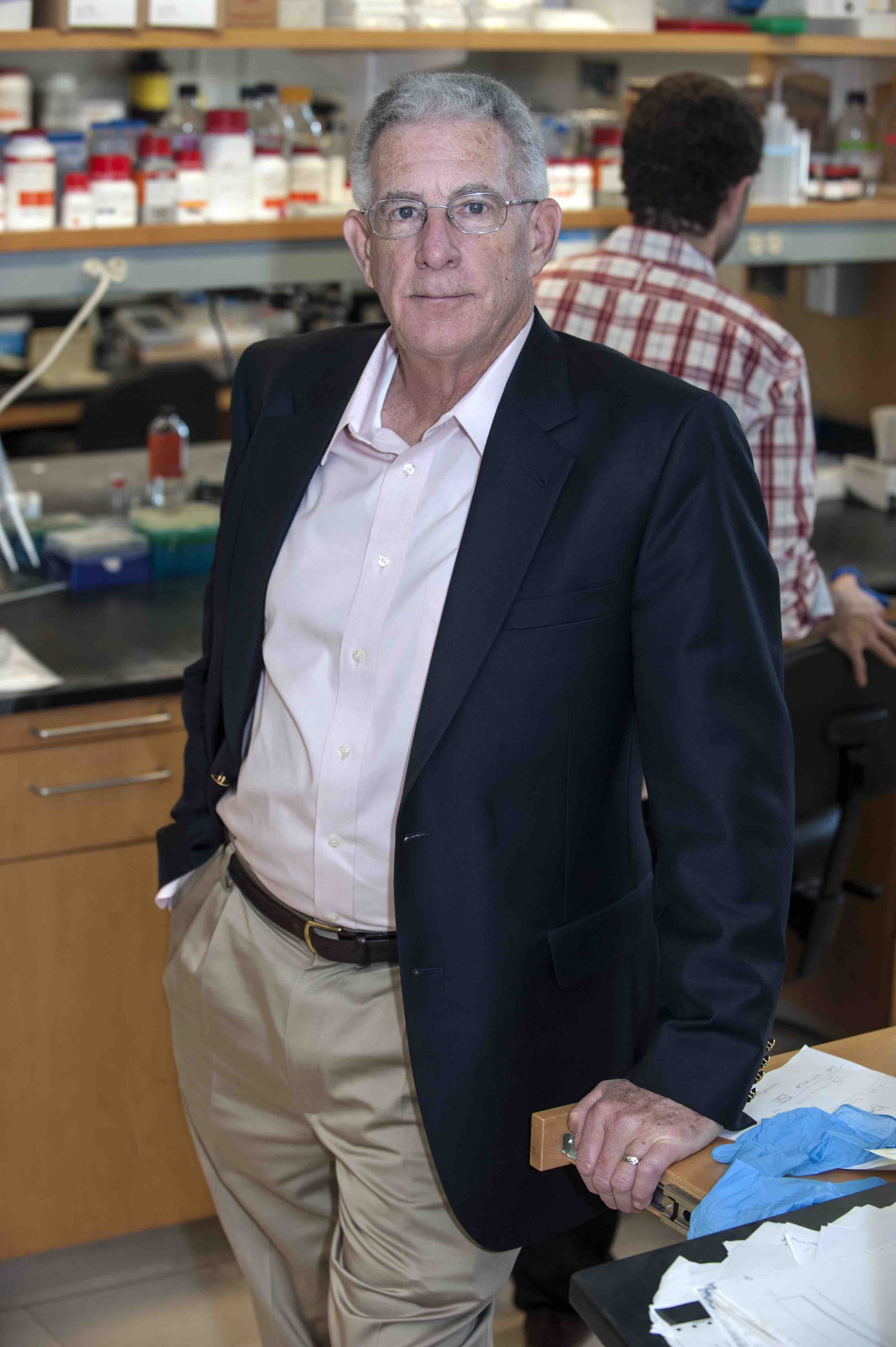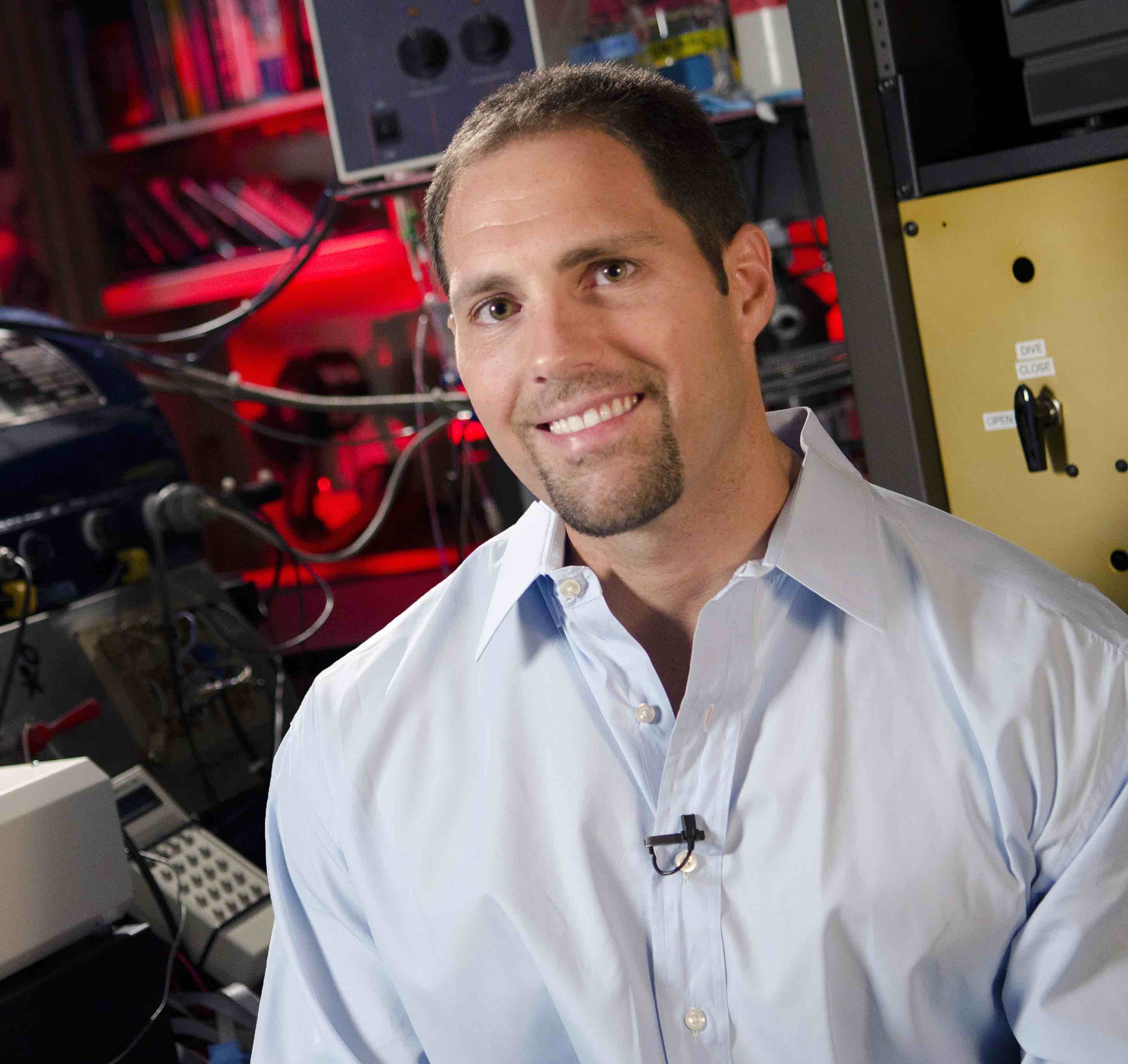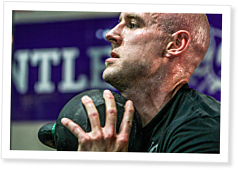
To move all significant health markers in the right direction, do more work faster, trainers say.
The only way to know intensity is to experience it.
It is not a mythical creature born of grunting loudest, sweating most or cheering excitedly. It is also not a matter of opinion. It's physics. Scientifically speaking, intensity is defined as power: force multiplied by distance, then divided by time. Simply put: Intensity is doing more work faster.
“You have to teach people how to do it,” said Chris Spealler, a member of CrossFit Inc.'s Seminar Staff and a seven-time CrossFit Games athlete who owns CrossFit Park City in Utah.
Fran, for example, is a workout most of the general population should be able to finish in roughly 7 minutes or less, he explained. The workout calls for 21-15-9 reps of thrusters and pull-ups. For an athlete who is trying to break into that time domain, Spealler provides the road map: Do the 21 thrusters and 21 pull-ups in no more than 2 sets each, and the break can be no longer than 5 seconds. At the end of that round, the clock should read “2:00” or “3:00.”
“Giving people targets is hugely helpful, and I think that's where a lot of affiliate owners miss it in the application,” Spealler said.
He continued: “Really, intensity is being comfortable with being uncomfortable.”
That discomfort-doing 5 more reps when all you want to do is stop-is how you become fitter.
“Intensity is the independent variable most commonly associated with maximizing favorable adaptation to exercise,” CrossFit Founder and CEO Greg Glassman wrote in April 2007's “Understanding CrossFit.”
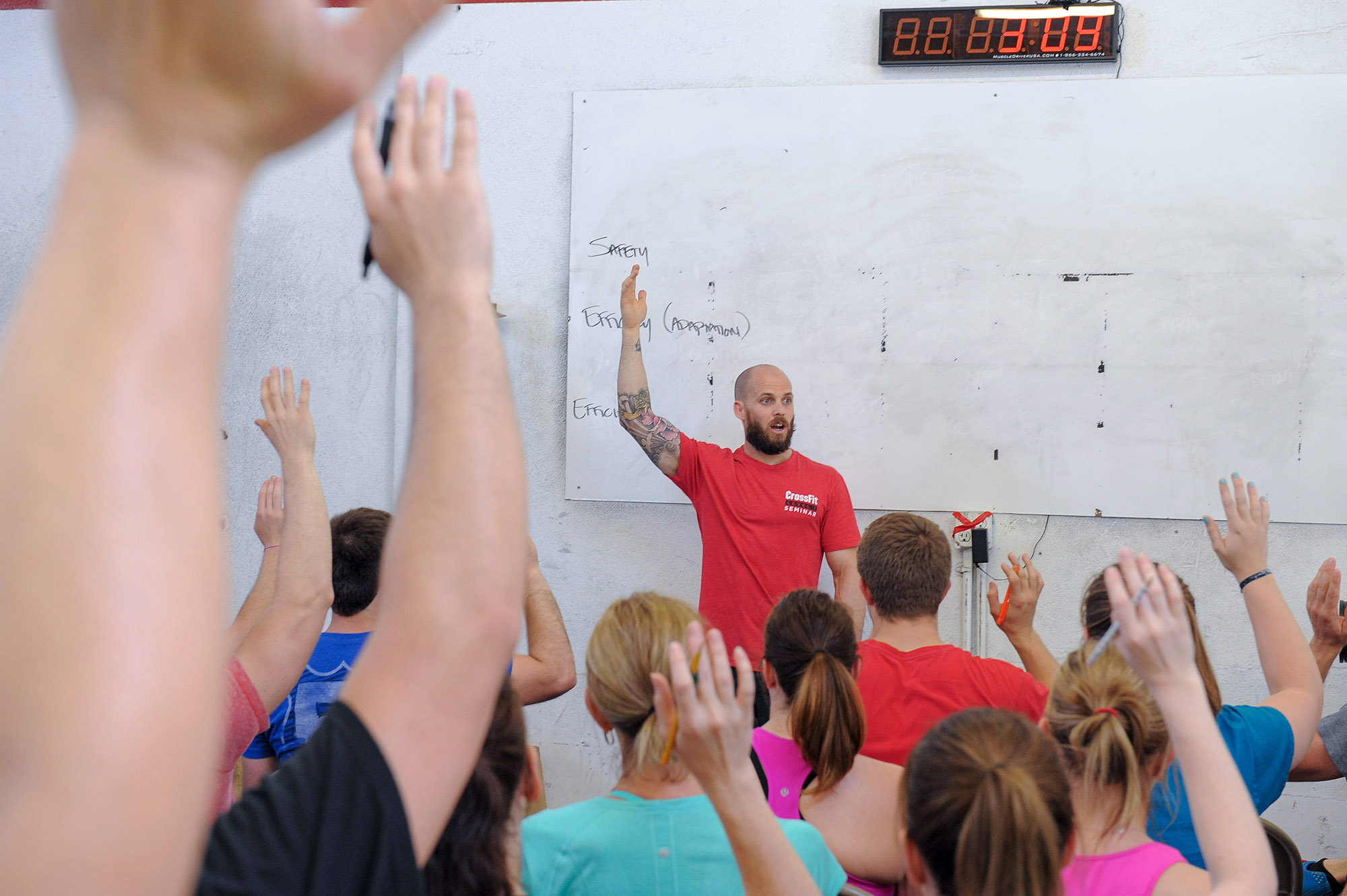 Chris Spealler explained that just like proper mechanics in the air squat, for example, coaches must teach intensity.
Chris Spealler explained that just like proper mechanics in the air squat, for example, coaches must teach intensity.
Favorable adaptation includes improved body composition and improved health markers such as fasting glucose and triglycerides. It takes people from sick to well to fit.
“Be impressed by intensity, not volume,” Glassman is quoted as saying as early as 2002.
Crudely translated, it means this: Do more work in less time-not more work in more time.
Explained via a CrossFit scenario, if you took 10 minutes to do Fran and then did another workout because “10 minutes wasn't enough,” you did not perform Fran with intensity. If you had, you'd still be on your back. Likewise, you will not reap intensity's benefits.
The scenario is becoming increasingly common at affiliates worldwide.
“There's a pervasive thought process going on in kind of the competitors' circle that more volume equals better, and I see that leak into our regular classes where everybody wants extra work to do,” said Ben Benson, owner of CrossFit Terminus in Atlanta and coach to Games athletes Emily Bridgers, Stacie Tovar and Becca Voigt.
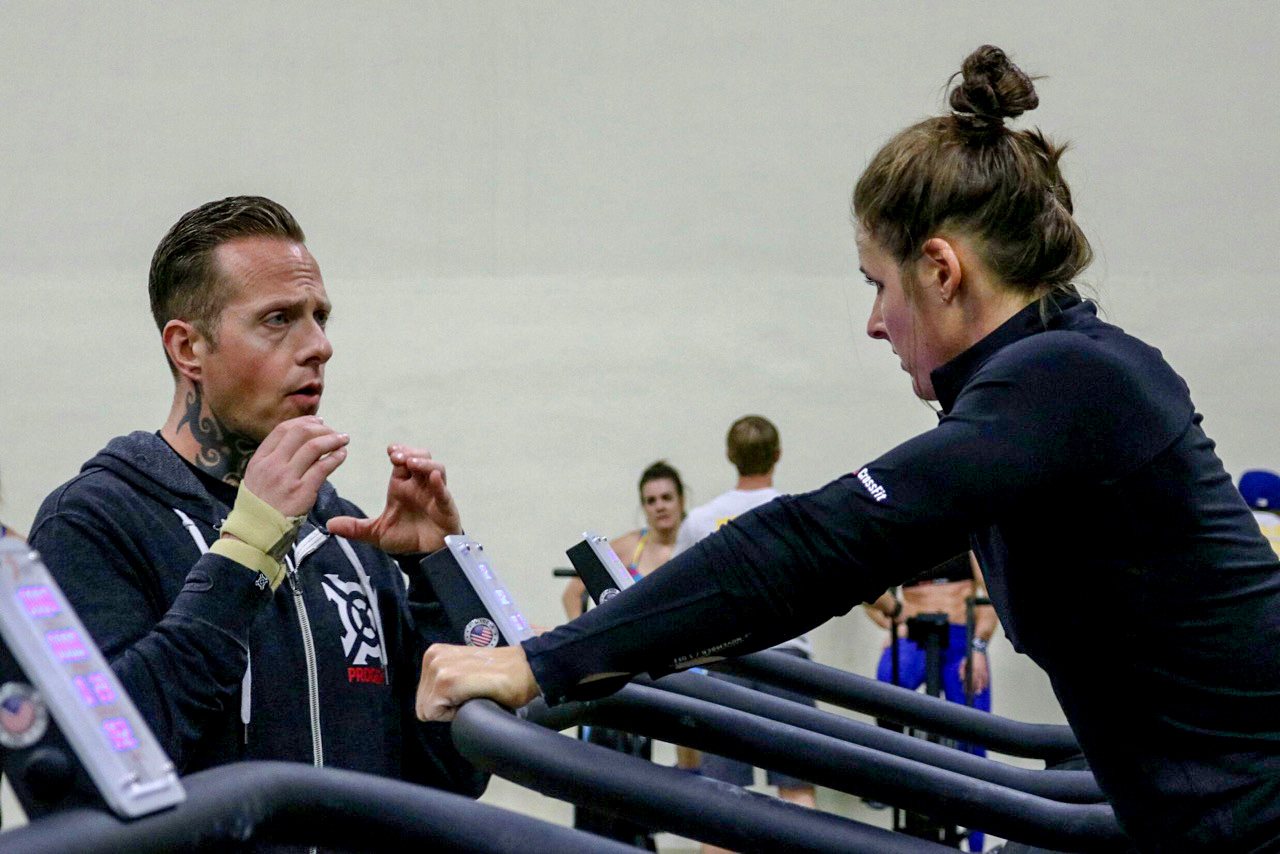 Ben Benson, coach to Stacie Tovar, said he sees many people opt for volume over intensity with poor results.
Ben Benson, coach to Stacie Tovar, said he sees many people opt for volume over intensity with poor results.
When he started CrossFit, he remembered, the mentality was to give 100 percent effort on every workout.
“Now I'm seeing people approach them with a gaming-type attitude,” Benson explained. “It's a very insidious problem that I'm trying to address.”
Games athletes are able to do more because they can maintain intensity throughout all the additional workouts, he noted.
“They've earned that volume, and they have the measurables and the resiliency to do that.”
One way Benson addresses the problem is through scaling.
“On a day-to-day basis ... we do a lot of scaling to try to get classes to be on the same page, especially with finishing times. We do a lot of time capping also,” he said. “It's a culture thing we worked on: not letting people make short workouts huge aerobic-capacity endurance tests.”
For a workout like Kelly-5 rounds of a 400-meter run, 30 box jumps and 30 wall-ball shots-he typically institutes a 30-minute cap. For Grace-30 clean and jerks for time-it's a 5-minute cap.
“I might do an 8-minute cap (for Grace),” Benson said, adding that he tries to balance such goals with ensuring all athletes feel included. “I don't want to make the cap so damn hard that nobody ever finishes anything.”
Most members have the ability to complete workouts in a timely fashion and also get a dose of intensity relative to their fitness, he noted.
“That's one of the arts of coaching a group class: You have to accommodate for what is relative intensity.”
In other words: scaling.
“It's so important when we get to driving intensity in a class,” Benson stressed.
 Chris Spealler, a longtime member of CrossFit's Seminar Staff, explained intensity is about doing more work faster.
Chris Spealler, a longtime member of CrossFit's Seminar Staff, explained intensity is about doing more work faster.
Spealler cautioned that intensity is not simply telling an athlete to “go as fast as you can” on Helen, for example: 3 rounds for time of a 400-meter run, 21 1.5-pood kettlebell swings and 12 pull-ups. If the athlete PRs his 400-meter run but falls on his back, unable to complete the remainder of the workout in the intended time domain, the coach has missed the point, he said.
“Isn't that intensity? Well, no. In that workout the goal is to have a good time.”
Same goes for a workout such as Filthy 50, which calls for 500 total reps across 10 movements. Spealler has seen athletes go “just berserk and explode” on the workout upon the advice of a trainer.
“I honestly think that coaches think that's what intensity is. That's kind of a real bad idea, actually,” he said, laughing.
But those who pick up the barbell when they don't want to and push the limits of their discomfort are doing it right, Benson said.
“The people that are approaching it in that manner, they're getting the most bang for their buck out of their training, not necessarily with volume but with intensity,” he said. “That's going to be, really, what gives you adaptation. And it doesn't matter what it is. ... Going to your end point-that's really what drives physical and hormonal change. But I see a lot of half-assing it. And not necessarily seeing things get better.”
About the Author: Andréa Maria Cecil is assistant managing editor and head writer of the CrossFit Journal.
Photo credits (in order): Anne Talhelm, Dustin Tovar, Anne Talhelm


